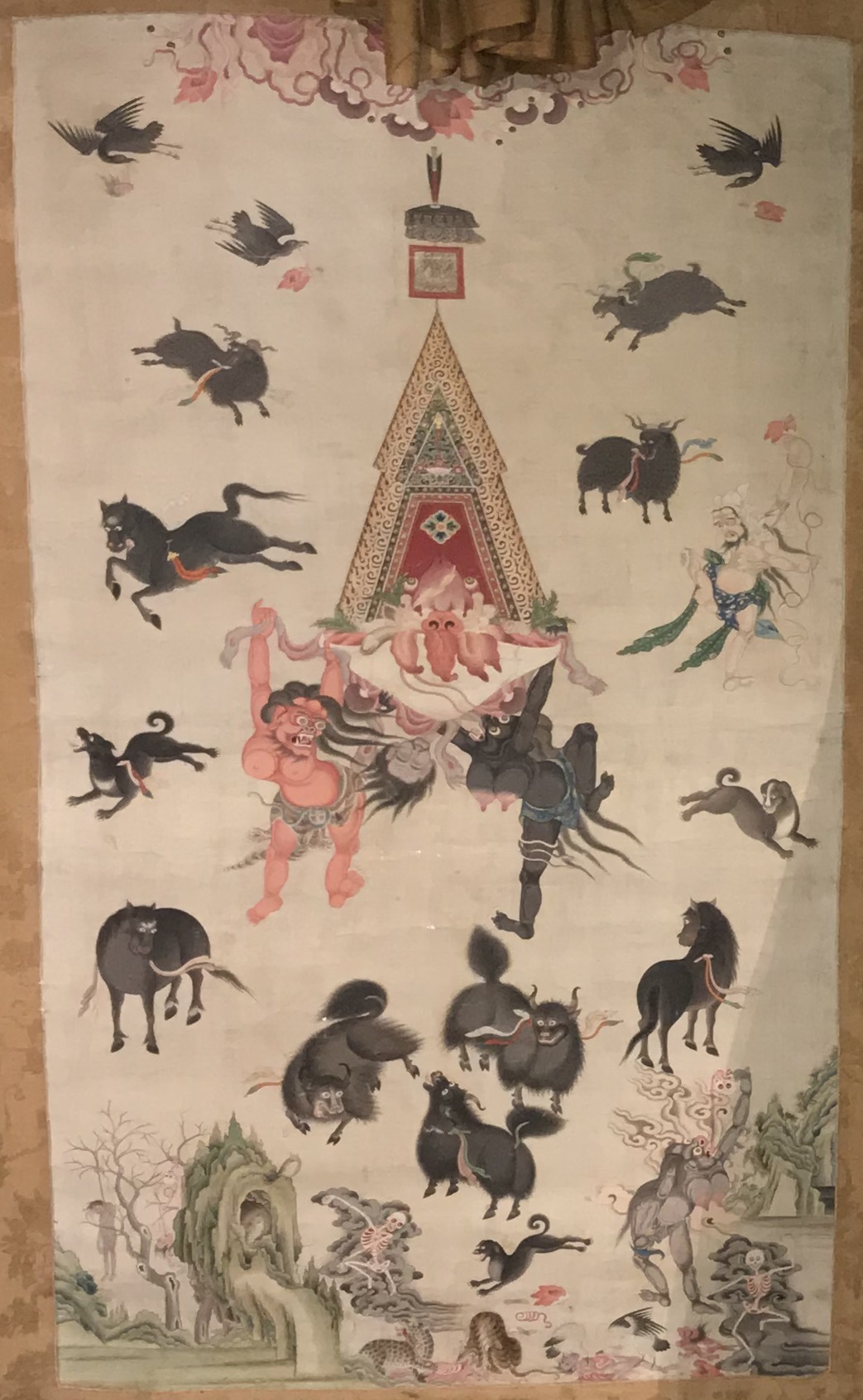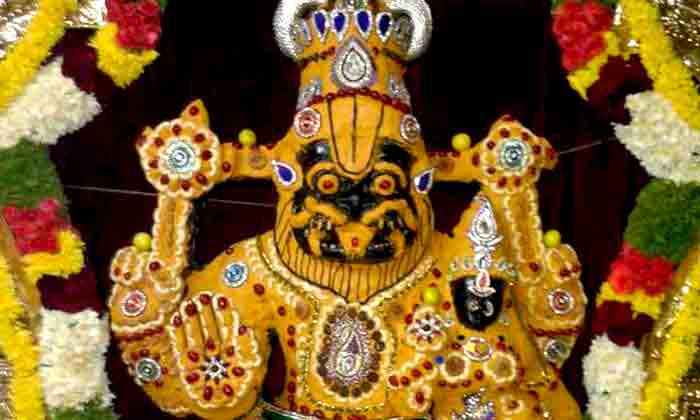Posted by Old Student (here)
This is the "necrophiliac tendencies" that need to be explained away? She 'ogles' him and then gets enraged and ferocious and compassionately destroys Mara's army? Perhaps she was a bit upset about how things had gone down.
He may have understated or skipped something.
The direction of the mantra indicates a wrathful rite.
This is the kind of thing I have a feeling exists for Lakshmi as well, in somewhat similar form, taking into account her power. I don't know that it exists, but somehow, there needs to be some counterpart for her in the cemeteries and so forth of pre-11th century texts.
I am not sure of its age however the Panjara fits in according to the description of Dolpopa's successor:
From the age of eight he mastered the Vajrapanjara Tantra and the Samputa Tantra, which are the two explanatory tantras of the Hevajra system.
Namostute is said to come from Padma Purana which...accumulated...from 4th to 10th centuries.
Practitioners say thousands of years and she is Mahamaya or Nirguna Mahalakshmi Devi Mahamaya:
Kolhapur Mahalakshmi or Amba Bai temple is from the 7th century:
Those, we could say, at least have the ability to slaughter or to be of a violent or terrifying nature.
Durga is Mahalakshmi when combined to destroy Mahishasura.
Correspondingly, the Buddhist War Chariot goddess is:
Mahamaya Vijayavahini
It is more violent and more Blood than it is Cemetery, but at least that much can be shown as an old part of her.
a lot of layers that when they were all applied I was asleep and dreaming.
"Layers" seems to be one of the few ways to describe...some of the things that keep happening...doesn't it?
- Home
- Forum
- Chat
- Donate
- What's New?
-
Site Links

-
Avalon Library

-
External Sites

- Solari Report | Catherine Austin Fitts
- The Wall Will Fall | Vanessa Beeley
- Unsafe Space | Keri Smith
- Giza Death Star | Joseph P. Farrell
- The Last American Vagabond
- Caitlin Johnstone
- John Pilger
- Voltaire Network
- Suspicious Observers
- Peak Prosperity | Chris Martenson
- Dark Journalist
- The Black Vault
- Global Research | Michael Chossudovsky
- Corbett Report
- Infowars
- Natural News
- Ice Age Farmer
- Dr. Joseph Mercola
- Childrens Health Defense
- Geoengineering Watch | Dane Wigington
- Truthstream Media
- Unlimited Hangout | Whitney Webb
- Wikileaks index
- Vaccine Impact
- Eva Bartlett (In Gaza blog)
- Scott Ritter
- Redacted (Natalie & Clayton Morris)
- Judging Freedom (Andrew Napolitano)
- Alexander Mercouris
- The Duran
- Simplicius The Thinker







 Reply With Quote
Reply With Quote




Bookmarks